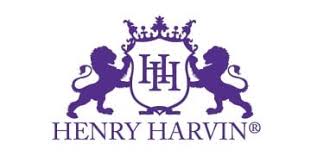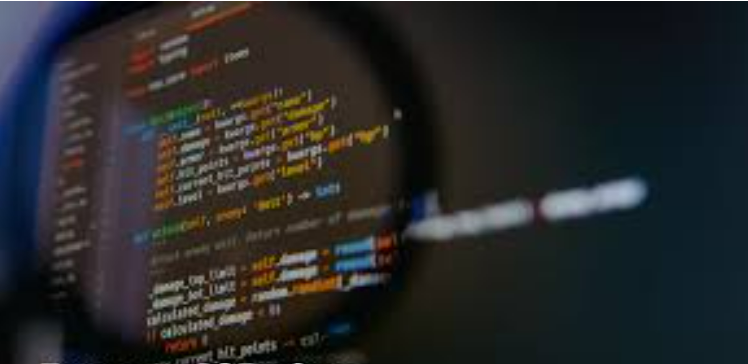In today’s fast-paced world, everyone is used to technology and how we use it in various ways in our day-to-day lives. Without technology, we are not able to think of it; therefore, to work behind this technology, in addition to various programs have been designed and implemented. One of these is Python programs, which are used for various applications and also for making websites in the backend processes for smooth functionality. Python is the most renowned and popular programming language in the world, specifically used by many major tech industries. They are used for analyzing data, building machine learning models. and also creating websites and applications, and programming software. Python programs are used widely in data science, as well as in data analysis, data engineering, software development, etc. In this blog, we will see different Python programs and code examples for practice.

Why Learn Python programs?
- As briefed earlier, Python programs are used in day-to-day lives; therefore, learning Python programming data types will always be useful, not just as a wide career option but also for personal development.
- Python programming can be used as a handy tool and can be added to your current job profile if required; simultaneously, it can be used as a learning tool.
- Through Python programming, an individual can apply for new positions as well as earn a very well-paid salary in addition to their current job.
- As we enter the phase of AI (Artificial Intelligence), learning various Python programming Data Types will remain beneficial in the near future, as well as where technology will be the source of all modes of communication.
- Python programs are designed for professionals who can accomplish very useful tasks, additionally creating bots and various applications, which are prevalent in the market.
- Finally, by learning Python programs, you will add one more feather to the cap of your career goals as a result, you can achieve the same in the near future.
Python program examples:-
1. Program to add two numbers:-
Code
Num 1 = 25 # input number 1
num 2 = 50 # input number 2
Sum =num1 num 2 # adding two numbers to get the sum
Print (The sum of 2 numbers is :(sum) )# printing the sum
Output:-
The sum of two numbers is 75
2. Program to reverse the array elements
Code:
Arr = (45,54,76,123,25,123)# imputed array of numbers
Reversed _arr=arr(:-1)# finding the reverse array elements
Print (The “reversed array is (reversed_arr)#printing the reverse of elements in an array.
Output:
The reversed array is (123,25,123,76,54,45)
3. Program to swap two numbers
Num 1 =56 (first number)
Num 2= 90 (second number)
Print {“The number 1 is {num 1}, num 2 = {num 2}]# printing the original numbers
# swapping the two numbers
Num 1,num2=num 2 num 1
Print {“swapped numbers are : num 1 ={num 1}, num 2 ={num 2}# printing the swapped numbers
Output: –
The number 1 is 56, num 2 = 90
Swapped numbers are: num 1 = 90
Num 2= 56
4. Program to reverse a number:-
Code:
Num =int {input[“enter a number”] #getting input to reverse it
Rev_num = 0 #initial variable with 0
# while loop until num is not 0
While num ! = 0:
digit=num % 10 # finding the reminder
rev_num=rev_num *10 + digit
Num //=10
Print {Reversed number is : {rev_num}# printing the results
Output:-
Enter a Number:- 524512
Reverse Number: 215425
5. Program to check prime numbers
Code: # defining the prime check function
Def prime_chk(num)
If num <=1
Return false
For (in range 2, int {num**0.5}+1)
If num % i==0
Return False
Return True
ans = int(input(“Enter a number to check for prime: “))
print(f”The number {ans} is prime: {prime_chk(ans)}”)
Output:
Enter a number to check for prime: 25
The number 25 is prime: False
6. Program to append elements to the list:-
Code:
User_list: {56,73,12,6876,1257,120,1223}# appending numbers in the list of numbers
User_list append {609345}
Print {“The list after adding elements is (user_list”)} # printing the list in Python after adding elements.
Output:
The list after adding elements is: { 56,73,12,6876,1257,120,1223,609345}
7. Program to remove the element from the list:-
Code:
User_list 1= { 56,73,12,6876,1257,120,1223} # appending numbers in the list of numbers
User_list 1 remove (73)
Print {The list after removing an element is: {user_list_1} # printing the list in Python after removal.
Output:-
The list after removing an element is { 56,73,12,6876,1257,120,1223}
Python Programming Data Types:-
As explained above, various Python Program Example Codes, in addition to it, there are also various data types to be used while computing or analyzing that can be stored in a variable form. Following we can understand through the example given below:-
Num = 24
Here, 24 (an integer) is assigned to the num variable. Therefore, the data type of num is of the int class.
Python data types:
| Data Types | Classes | Description |
| Numeric | Int, float, complex | Holds numeric values |
| String | str | Holds a sequence of characters |
| Sequence | List, tuple ,range | Holds collections of items |
| Mapping | dict | Holds data in key-value pair form |
| Boolean | bool | Holds either true or false |
| Set | Set, frozenset | Holds a collection of unique items |
As everything is an object in Python programs, data types are actually classes, and variables are objects of these classes.
Certificate course at Henry Harvin Education for Python programs:-

Henry Harvin is a versatile educational platform that provides a Python programming certificate course, as a result where an individual can learn from the basics to advanced-level learning programs. At the Henry Harvin Python certification course, you will develop the core programming fundamentals, besides this, various Python Programming data types. An individual can practice real-time practical knowledge, on the contrary which will help them advance their career throughout their life. However, upon completing the course at Henry Harvin, an individual will have a wide range of career opportunities available in the market. On the other hand, at Henry Harvin, there are various course benefits offered to the learning professionals in the institute.
What value does the Henry Harvin certificate carry in the global market:-
- The Henry Harvin certificate is not just a passing certificate; although it is recognized worldwide and has accreditation from UKAF, UK Cert, and MSME.
- It has a national and international clientele base globally; as a result, certification is valued and has its importance.
- Upon completing the Python programs course, following the training certification serves as proof that you have taken a significant step in enhancing your career prospects
- The practical knowledge and working on various projects at the time of the course can lead to great heights. Additionally, it also sets you ahead of every competition.
- The certificate has value in all premium job portals and also in corporate companies, which will increase your individual response.
- Henry Harvin’s placement drives support for students throughout their career journey, but also helps them achieve a successful journey together.
Conclusion:-
People learn Python programming as a language; as a result, they use it worldwide in technologies. On the other hand, as Data science and AI (Artificial Intelligence) are capturing the market. Nevertheless, it will help professionals in the near future to gain more knowledge and develop skills in their productivity. Consequently, upon the completion of the course, you will get a well-paid job role in the near future. As the mastery of Python programming is a continuous endeavor furthermore with no foreseeable conclusion in the international market, most importantly, advancements continue to emerge, and technology progresses steadily. Later, as discussed above, Python programming consistently enhances the value of learning and self-skills of professionals.
Recommended Reads:-
- Python programs’ benefits and their certificate value in the global market.
- Basic things to learn while choosing the Python programming course.
- Trends in learning in data science, as well as machine learning, that help us.
- Exciting project ideas that make learning enthusiastic.
- Learn Coding in Python programming with examples
- Top 25 Libraries Python Libraries in 2024 we should know.
FAQs:-
Ans:- Beginners with no prior knowledge in programming can learn the basics of this course, although going forward, they can move on to advanced courses.
Ans:- This basic learning program places you in various industries and organisations as a Developer, Data Scientist, Data Analyst, Software Engineer, etc.
Answer: It takes up to 2 months for the basic course and 6 months for the advanced course; moreover, it depends on the sessions attended by an individual.
Q4. : What are the prerequisites for the Python programs course?
Ans: The prerequisites for the Python programs course are not specified, but students who have completed at least an intermediate or upper secondary level are recommended.
Ans:- Yes, after successful completion of the course, an individual is placed in various organisations and industries depending on their requirement criteria.

















